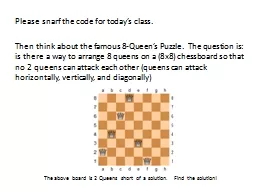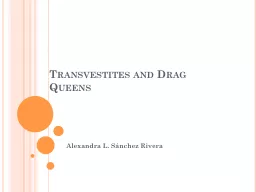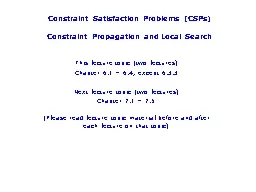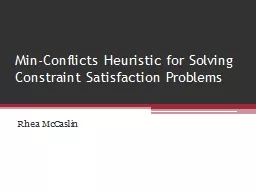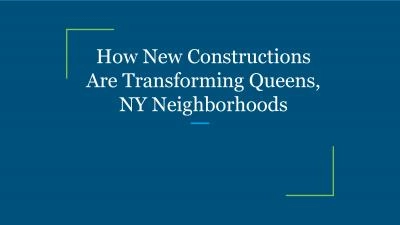PPT-N Queens Problem by
Author : marina-yarberry | Published Date : 2019-11-21
N Queens Problem by Max Groover Chris Wehunt Forest Gates Introduction The N Queens problem is finding the placement of N queens on an NN chessboard so that no
Presentation Embed Code
Download Presentation
Download Presentation The PPT/PDF document "N Queens Problem by" is the property of its rightful owner. Permission is granted to download and print the materials on this website for personal, non-commercial use only, and to display it on your personal computer provided you do not modify the materials and that you retain all copyright notices contained in the materials. By downloading content from our website, you accept the terms of this agreement.
N Queens Problem by: Transcript
Download Rules Of Document
"N Queens Problem by"The content belongs to its owner. You may download and print it for personal use, without modification, and keep all copyright notices. By downloading, you agree to these terms.
Related Documents


